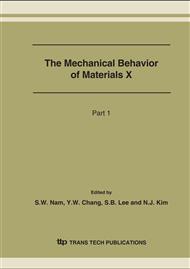p.1457
p.1461
p.1465
p.1469
p.1473
p.1477
p.1481
p.1485
p.1489
Viscoelastic Analysis of Adhesively Bonded Double – Lap Joint
Abstract:
In this paper, stress distribution in a double lap joint subjected to a tensile load is investigated using the boundary element method. The adhesive used in this study is a commercial epoxy system which can be cured at room temperature. The adhesive is assumed to be linearly viscoelastic. The order of the singularity is obtained numerically for a given viscoelastic model. The numerical results show that interface stresses are large enough to initiate local yielding or edge cracks. Since the exceedingly large stresses cannot be borne by the adhesive layer, edge cracks can occur at the interface corner.
Info:
Periodical:
Pages:
1473-1476
Citation:
Online since:
August 2007
Authors:
Price:
Сopyright:
© 2007 Trans Tech Publications Ltd. All Rights Reserved
Share:
Citation:


